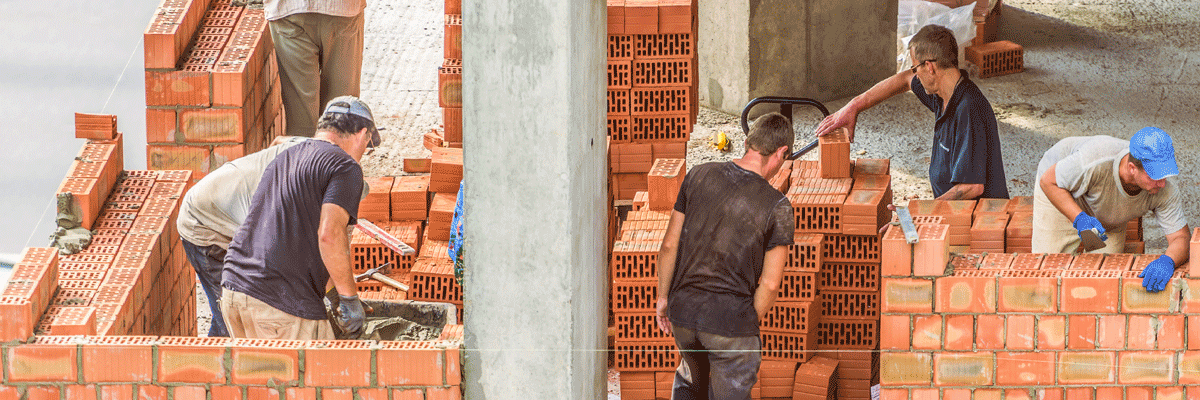

From the heights of these pyramids, 40 centuries look down on us.
~ Napoleon Bonaparte
Now, two centuries after Napoleon and 42 centuries after their construction, those Egyptian pyramids still look down on us, a testament to the masonry work performed by the stonemasons of the day.
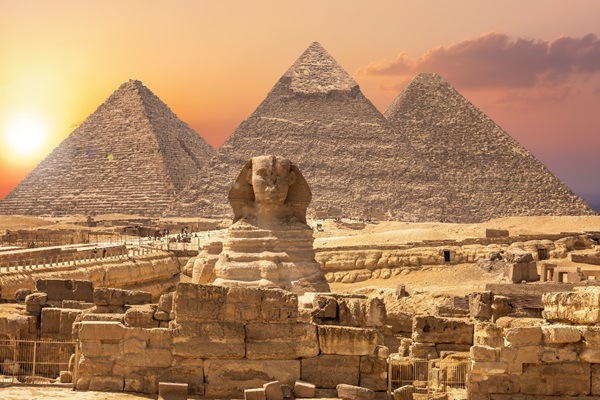
The Sphinx and Egyptian Pyramids
Someof the world's most impressive structures and architectural achievements result from masonry
principles, with the help of stones and lime mortar. Some of these include the Colosseum in Rome, India's Taj Mahal,
The Tower of London, The Forbidden City in China, and the Great Wall of China. Masonry structures are built to
outlast the everyday wear and tear that other buildings often succumb to over time.
And masonry is found not only in monumental landmarks but in the world around us. As you look around, recognize that
masonry skills likely helped create many of those buildings you see. Masonry is used in commercial structures,
school buildings, and constructed homes. Building patios, walkways, masonry heaters , and fireplaces also incorporate the craft. Skilled masons are vital to most
building construction, and they belong to a vital construction sub-industry.
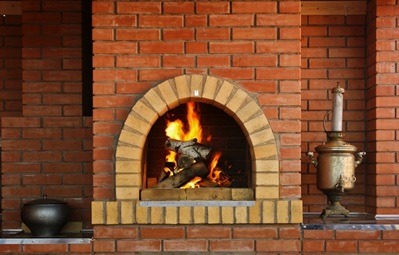
Anything made of brick, including fireplaces, involves a mason.
Onthis industry page, we cover a wide range of construction masonry topics: the industry, types of masons, employment and occupations, work activities, masonry tools, associations and organizations, and safety hazards. You may opt to continue reading to learn more about masonry and the mason's daily work activities, or you can click the hazard warning icon below and be taken directly to the safety section for this industry, its suggested PPE, and a list of potential hazards.
![]()
Click to jump directly to the Safety, Hazards and PPE section.
Let's build you knowledge of the masonry industry!

Hadrian's Wall in the U.K. was built by the Romans 20 centuries ago.
The official definition for masonry, according to Merriam-Webster , is “something constructed of materials used by masons,”
which is a little vague for what skilled masons do. Essentially, masonry principles are at work when blocks,
bricks, stones, and other materials are used to create a structure or elements of a structure.
Most times, the material is laid and bonded together with mortar to create strength and longevity for
the structure.
Buildings that incorporate masonry can withstand earthquakes and fires, which is why so many of the
significant landmarks we mentioned earlier have survived for so long. Since masonry does not rely on
fabricating metal materials, it can be completed faster and often with fewer mistakes than other rival
materials.
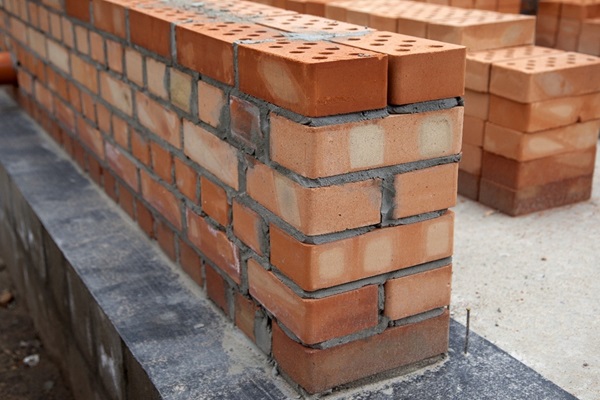
The U.S. NAICS industry code for Masonry Contractors is 238140. This coded number allows the
government to classify all the sector's businesses' activities, helping workers and suppliers better
understand the industry.According to IBISWorld, the masonry industry produces over $22 billion in economic activity each year,
with over 85,000 masonry businesses operating in the U.S.
The demand for masonry is heavily reliant on the needs arising from residential construction. With the
world's population increasing dramatically in the 20th century, there was a great need for residential homes
that could be built quickly and relatively cheaply without exhausting local natural resources like forests.
The demand for housing has continued into the 21st century and means that skilled masons are needed now more
than ever. Even when new commercial and residential construction is experiencing slow growth, there is
always a demand for additions, maintenance, and repair of current buildings, so a mason's work is never
done.
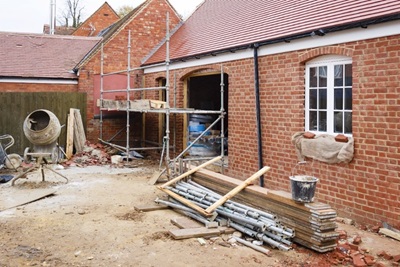
Residential home made of bricks
You may wonder why we have aConcrete industry section too, as masonry is closely tied to concrete. We break them up into separate pages since masonry involves using many materials beyond concrete. Businesses that pour, build, and finish concrete foundations are classified under NAICS code 23811, a separate construction sub-industry. However, cement masons who use concrete will most likely find both pages advantageous when selecting personal protective equipment (PPE).
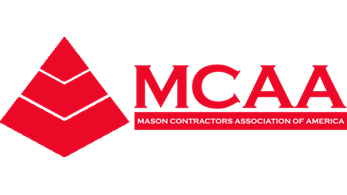
Every industry typically has associations and establishments that promote all companies' general welfare and support workers operating in the industry. Here are two of the most recognized associations for masonry:
The Mason Contractors Association of America (MCAA) is the national trade association representing masons with industry standards, continuing education, and safety forums raising overall awareness. For safety topics, the association equips masons with an entire safety library for contractors to utilize.

The Masonry Institute of America is a technical and research organization improving masonry's utilization across the construction industry. They provide numerous masonry resources for contractors. Here are some:
Othermasonry associations include:
All masonry associations have one thing in common: keeping masons armed with the most relevant, up-to-date information possible to help them best perform their job. Many masons working in this industry look to these professional associations for answers.
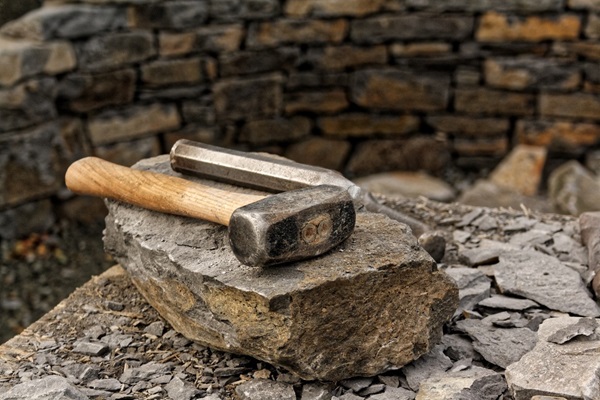
According to the Bureau of Labor Statistics (BLS), there are over 302,100 masonry workers in the U.S. These highly skilled craftsmen are often referred to as bricklayers, even though they may specialize in other material such as stone or cement.Most learn their craft through apprenticeships, technical school programs, or a combination of both.
Here is a look at the largest employers of masonry workers:
| Employment Source | % Employment |
|---|---|
| Cement masons and concrete finishers | 200,400 |
| Brickmasons and blockmasons | 81,900 |
| Stonemasons | 16,800 |
| Terrazzo workers and finishers | 3,000 |
Most masons work in commercial and residential construction, over half, in fact. Out of all the masonry jobs mentioned above, more than 150,000 find employment in general masonry construction. Our next section provides a more detailed look at each type of masonry contractor.
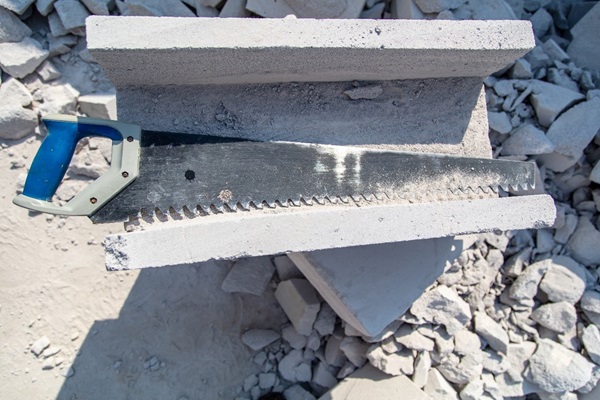
A mason's skill will never be replaced by any machine, at least not any time soon. Their craft
requires superb color vision, precision in the placement of bricks, and strong hand-eye coordination.
Most masonry contractors are primarily responsible for making structures take permanent shape using bricks
and stone. However, some are required to be even more detail-oriented and make those shapes look fantastic,
with eye-catching artwork and terrazzo patterns. Here is a look at the various types of masons identified by
the BLS:
Cement Masons
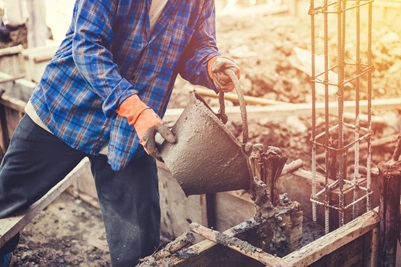
Place, smooth, and finish the surfaces of poured concrete. They often focus on concrete floors, sidewalks, and roads.
Brick Masons
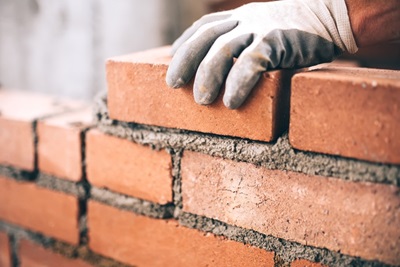
Often referred to as bricklayers, build structures, walls, and fireplaces utilizing bricks bonded together with mortar.
Stone Mason
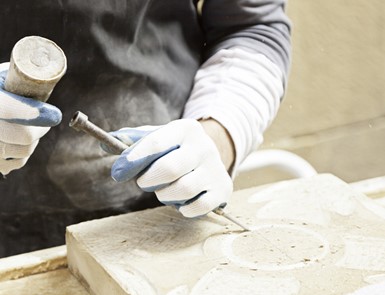
Set exterior walls and floors with stone. They transform rough pieces of rock into geometric shapes used in a variety of building applications.
Terrazzo Masons
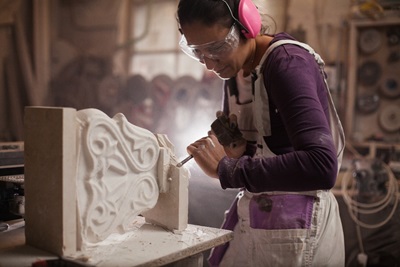
Create decorative finishes and build patterns into sidewalks, floors, courtyards, and panels. They paint fireplaces, stamp and stain concrete, and finish concrete walkways.
While these masons may all specialize in different areas, they share more similarities than one might think. According to O*NET OnLine, they all spend time enduring outdoor weather challenges, as 97% of masons surveyed say they were exposed to the weather. They are also all exposed to hazardous substances while on the job. Let's dive into the activities and tools masons use, as they play an essential role in worker safety.
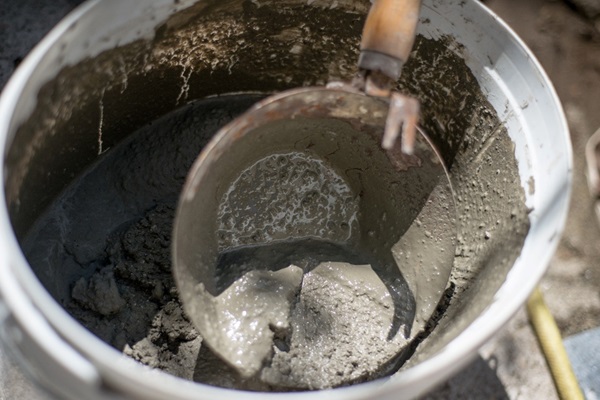
What is masonry work? A mason's role in construction can be as straightforward as building a wall,
or it can involve challenging problem-solving skills such as erecting a skyscraper. Regardless of the
complexity involved, a mason constructs a building or structure one block or unit at a time.
For all the different masons mentioned above, each performs a wide range of activities. These activities
include carrying heavy tools and equipment and handling abrasive material, all of which can injure their
hands.
Here are some more activities performed by masons:
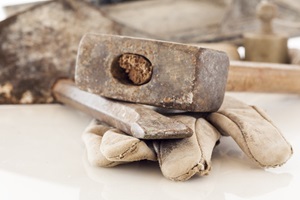
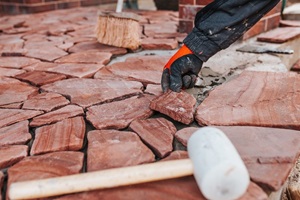
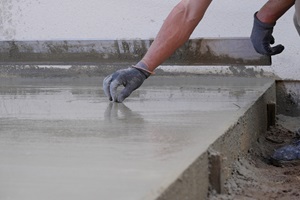
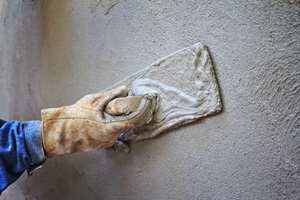
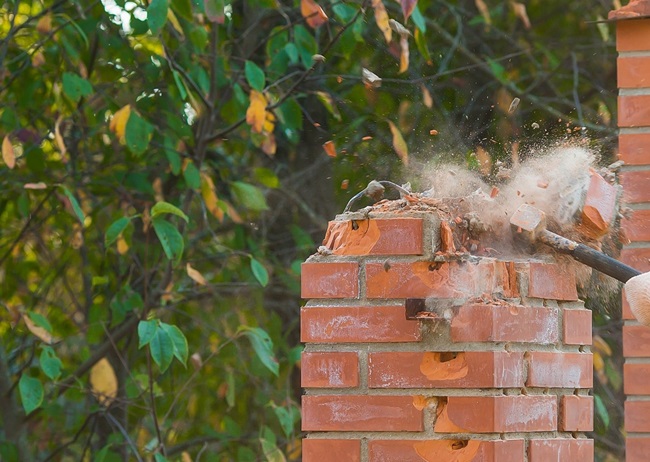
No matter what task a mason performs, you can be sure exposure to hazards occurs. We understand this, which is why we highlight some of the dangers created from these activities and suggest the PPE to keep masons protected. Before we explore PPE options, here is an overview of the tools commonly used by masons.
Each masonry trade requires specialization, and not all masons will perform every activity we highlighted above.However, all of them will use familiar tools to complete their projects.
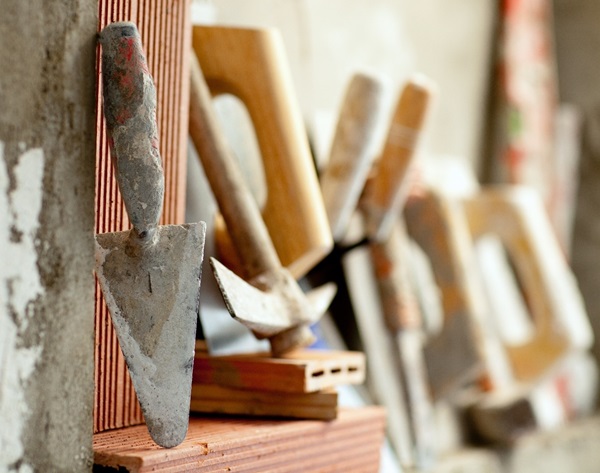
Masons rely heavily on tools, as the process of bricklaying and stonelaying requires precise accuracy. Before the initial brick is set, masons are armed with a wide range of tools to complete construction projects. We’ll take a look at some of the more common tools used. We highlight these because many injuries workers suffer are caused by the tools they use on the job.
Here is a look at some of the most common masonry tools you'll find:
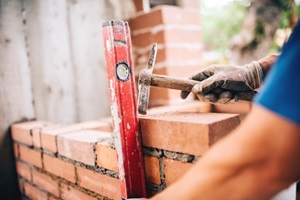
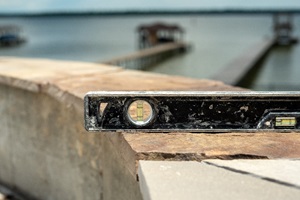
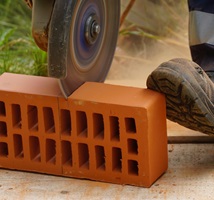
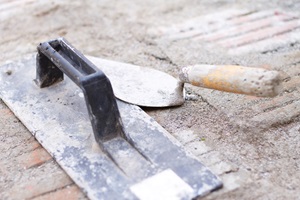
According to O*NET OnLine, 96% of masons polled said they spend time using their hands to control tools and to feel objects. MCR Safety provides masons with the protection they need to keep their hands shielded from hazards.
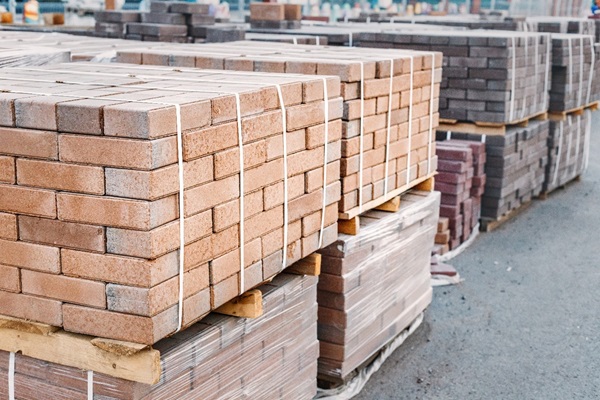
What is the purpose of a tool if you have no material to use it on? Clay bricks and concrete blocks are two of the materials most often used by masons. However, masons work with all kinds of materials when constructing buildings and structures. Here are some of the common materials used in masonry construction:
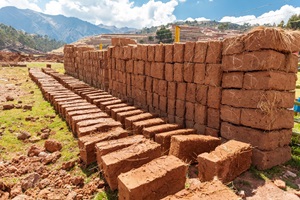
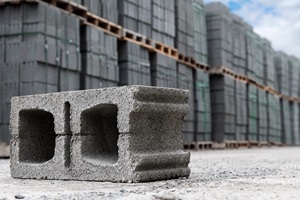
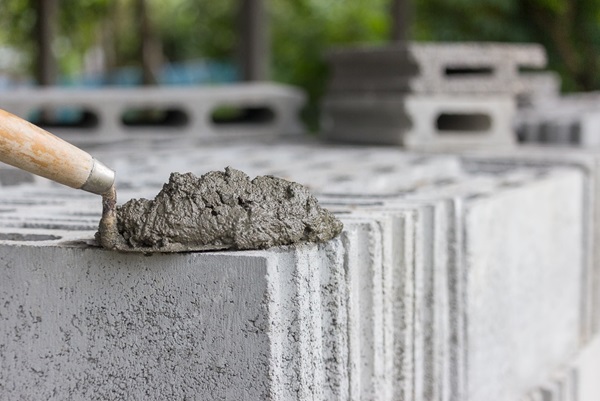
No matter the task, the material, or the tools used, masons agree that a top concern on any job site is safety. PPE is required to help protect masons from the hazards they face on the job.
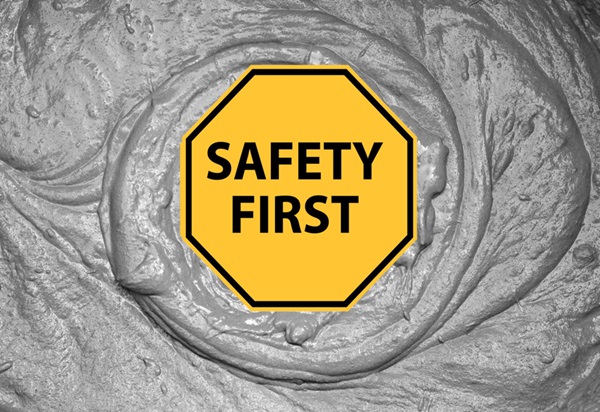
Accidents and injuries are common across the construction industry, especially among masons, so
keeping a watchful eye on the work environment is crucial. The Masonry Contractor industry ranks #7 out of
21 total construction sub-industries for injury incidents.
For every 100 people, there is an injury experienced by 3.5 masonry workers. Here are some other stats the
BLS provides that masons should consider:
Due to the number of incidents that occur, most masonry companies will institute a contractor safety program.
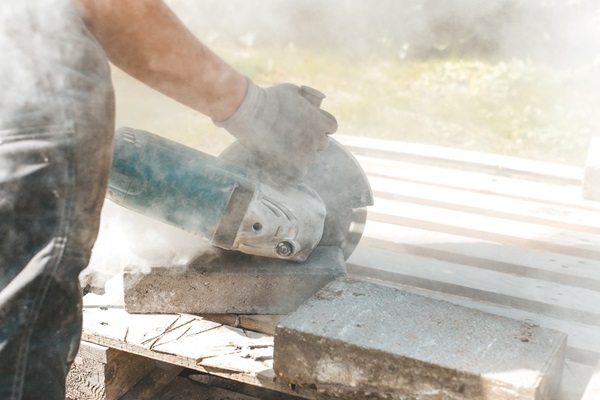
Masonry is a craft that involves inherent risks from muddy environments, dropped objects, and
exposure to chemicals. Because of the hazards masons face, most companies will have a program to guide all
workers involved in masonry activities and instruct them on safety protocol and PPE.
Here is an example from Alliance Masonry
Corp . that addresses
all relevant safety topics workers must be familiar with while operating at work. Established safety
programs are essential, as they identify hazards where PPE is required. Here are some examples of the
hazards faced by masons:
Masonry work is strenuous and challenging; however, risks can be mitigated. Before we move on to the PPE required by masons, here are some other helpful online resources regarding safety:
With all the masonry safety information and hazard information we've equipped you with, you're now ready to start considering the PPE options available to masons.
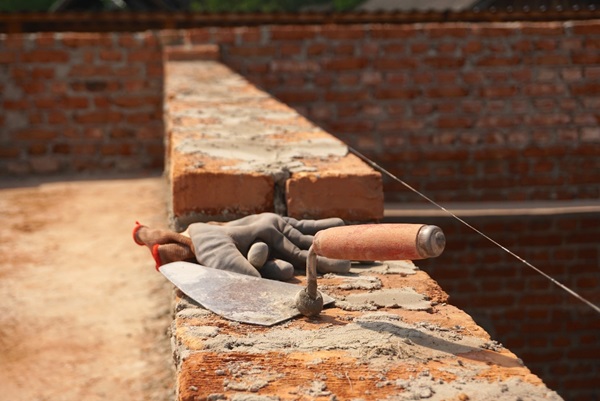
A successful man is one who can lay a firm foundation with the bricks others have thrown at him. ~ David Brinkley
Laying bricks is no easy task, but hopefully we have shed a little light on how vital masons are in construction. Now, let's illuminate what types of protection masons require. To combat potential injuries masons may suffer, they look to MCR Safety to protect them with high-quality PPE. Here is a broad list of various PPE that MCR Safety supplies to help masons avoid injury:
If you prefer to return to the main Construction home page, click the image below. From the home page, you'll be able to access any of the numerous construction industries we cover. If you would prefer to check out some of masonry’s specific trade hazards, please continue reading below the Construction page image.
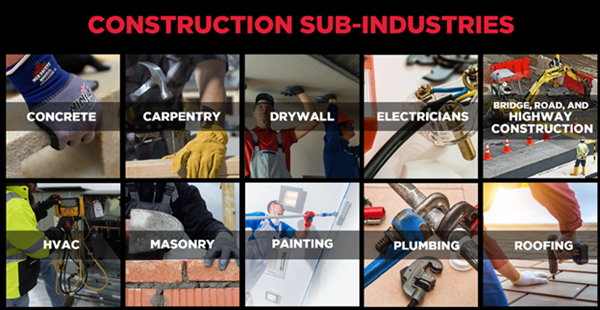
MCR Safety's dedicated Construction industry resource page.
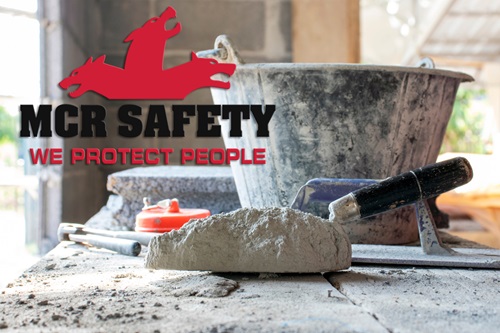
Find the right MCR Safety product that protects you against these common hazards.
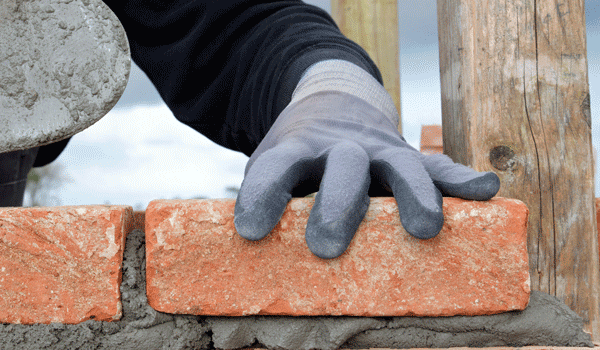
Take a look at any brick or concrete block, and you can see immediately how important it is to protect your hands from abrasion injuries. Next time you pick up a heavy block, make sure you’re armed with our best abrasion-resistant gloves.
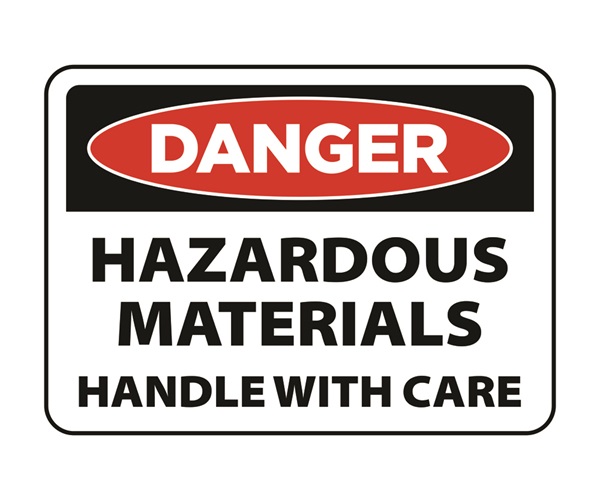
Cleaning masonry with caustic soda, or muriatic acid, exposes masons to harmful chemicals. Proper chemical protection should always be worn.
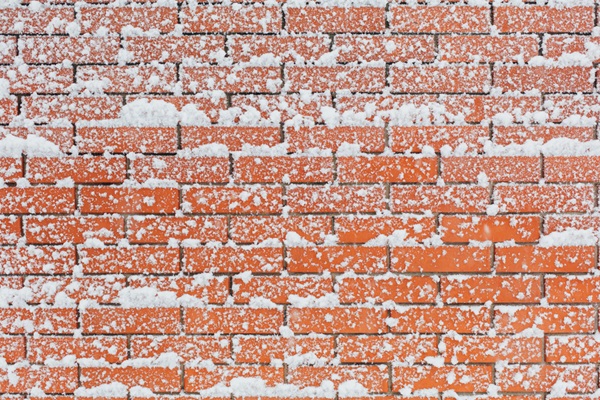
Rain or shine, snow or sleet, outdoor work activities continue in the winter months. Masons will need winter clothing, including bomber jackets and insulated gloves, to stay warm on the job.
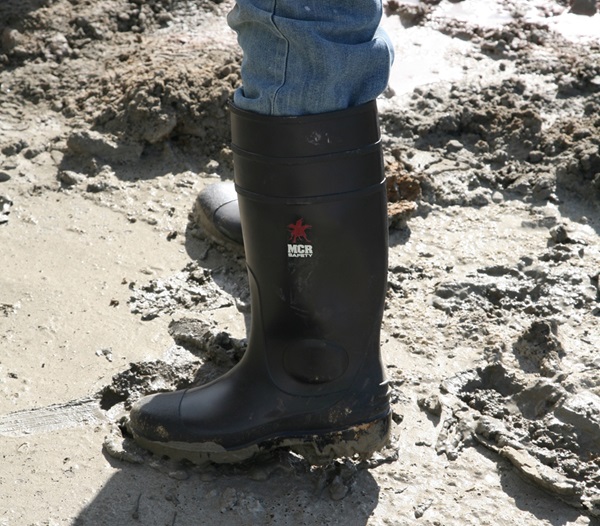
Caused by unpropped construction, overloaded elements, movement joints, storage and stacking of irregular units, horizontal chases, etc., masons face collapse dangers on the job. They’ll need their feet covered with steel-toe boots at all times.
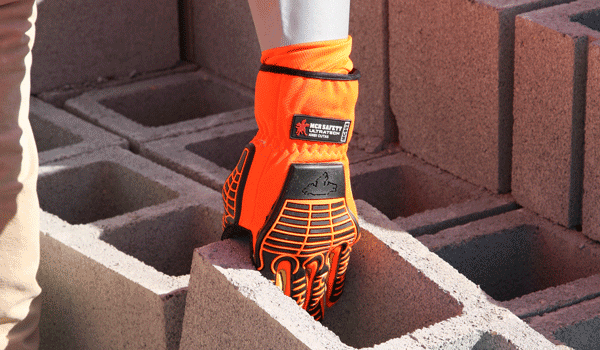
As we noted above, many injuries to masons result from impact with equipment. We make gloves that reduce impact injuries.
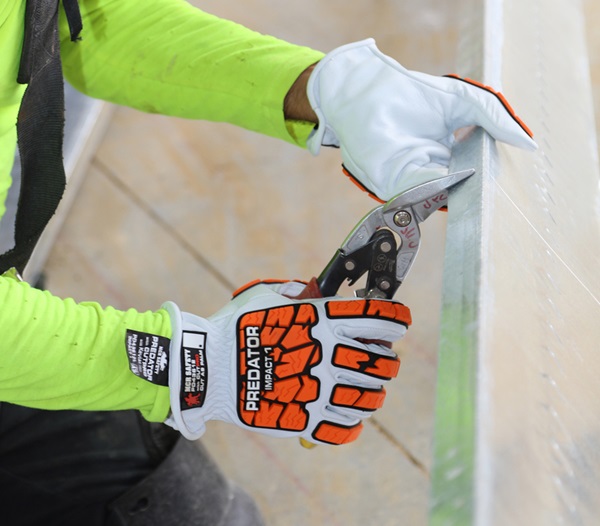
These injuries are typically caused by cutting materials with snips, tying off and anchoring objects, and working around insulation. Masons will need to be wearing cut-resistant gloves when sharp objects are present.
Learn More About Cuts and Lacerations Protection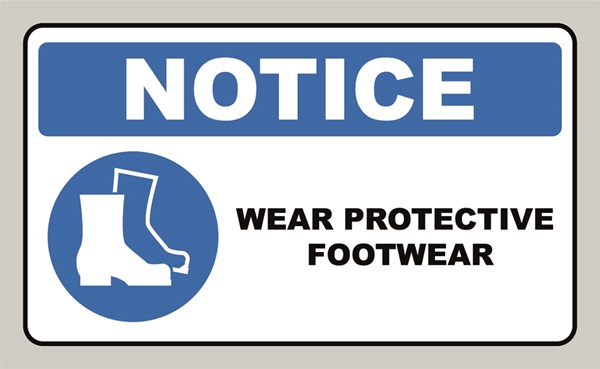
Many objects have the potential to fall on a mason’s foot during construction. You are going to need steel toe boots.
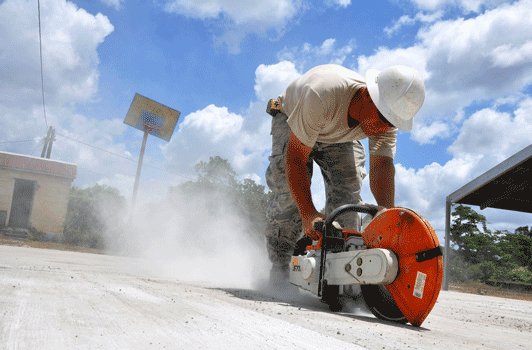
Masonry contractors often find themselves in dusty conditions! Lined eyewear styles are the ticket to keeping the dust out and your vision clear! When working dry mortar, dry cement, and using a dry saw, you'll need a dust mask, too.
Learn More About Dust Protection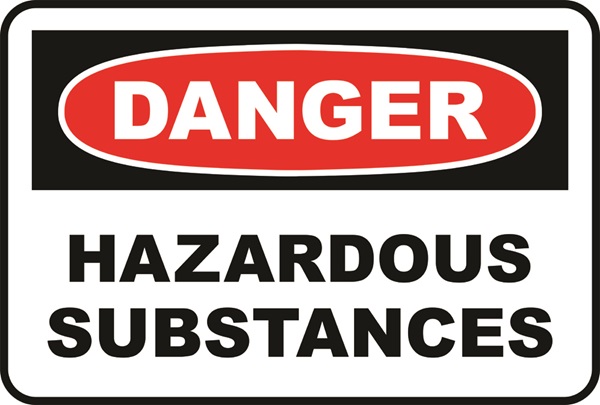
Wet cement, mortar mixing, chemical grouts, and additives are all concerns for a mason. Chemical-resistant gloves, face shields, goggles, and aprons are needed to protect the hands and body from caustic, hazardous substances.
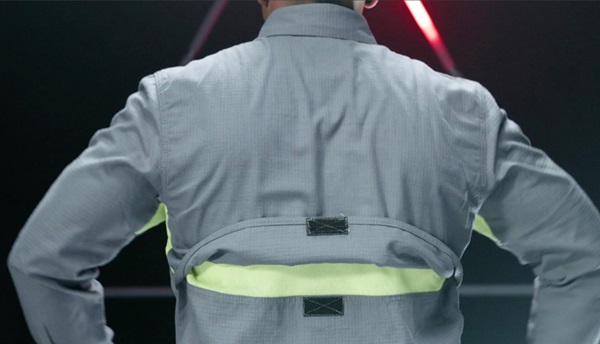
Construction work during the summer involves hot and humid working conditions. We manufacture triple-vented shirts and safety gear that incorporate breathable fabrics! Many workers prefer wearing hi-vis shirts made with wicking technology.
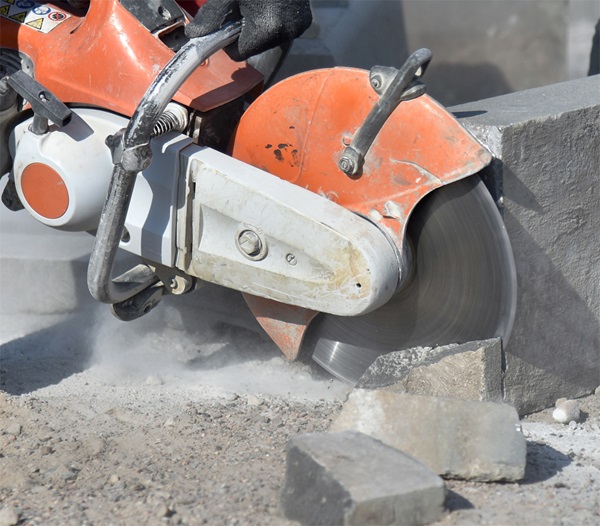
Mixing mortar, operating a power saw, chipping stone, surface finishing, and cutting bricks are several reasons why masons wear safety glasses and goggles. You never know when flying debris will make its way into your eyes.
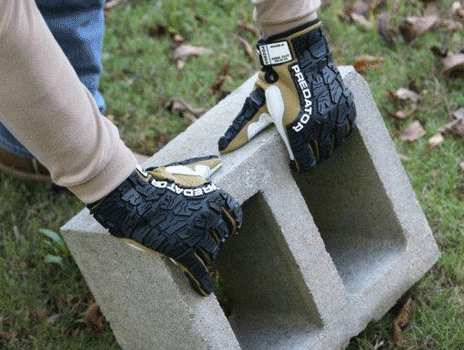
From bricks to wire and tools, a mason's hands are always picking up objects. They need to be shielded from potential dangers with the appropriate glove type.
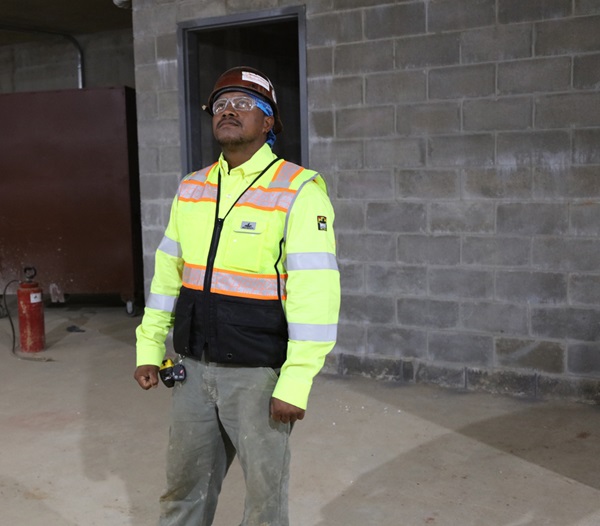
Construction is an ever-changing environment. Why risk not being seen? Wearing a hi-vis safety vest ensures that you'll stand out, and co-workers will notice you!
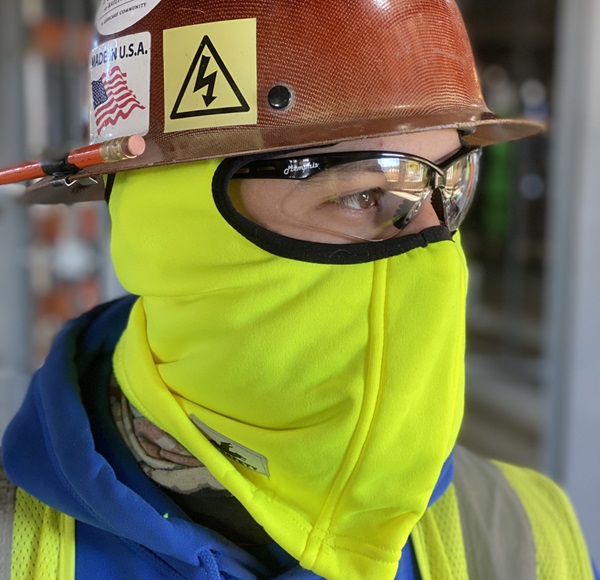
When that bitter cold wind starts hitting your face, nothing beats wearing a balaclava face mask.
 Why MCR Safety Products?
Why MCR Safety Products? 
MCR Safety manufactures and supplies Personal Protective Equipment (PPE). Simply put, WE PROTECT PEOPLE! We are known world-wide for our extensive product line depth surrounding gloves, glasses, and garments spanning across numerous industries. We offer the total package of safety gear encompassing industrial gloves, safety glasses, protective garments, welding gear, industrial boots, Flame Resistant (FR) gear, face shields, and much more. From a glove standpoint alone, MCR Safety manufacturers and supplies over 1,000 different style gloves. Here are some of the many reasons MCR Safety is your go to source for PPE:
MCR Safety is recognized as a global manufacturer stretching across six countries, with both distribution and manufacturing facilities. Our core competency and specialty is manufacturing and supplying protective gloves, glasses, and garments. The information shown and provided on MCR Safety’s website, its safety articles, industry resource pages, highlighted hazards and safety equipment should be used only as a general reference tool and guide. The end user is solely responsible for determining the suitability of any product selection for a particular application. MCR Safety makes no guarantee or warranty (expressed or implied) of our products’ performance or protection for particular applications.